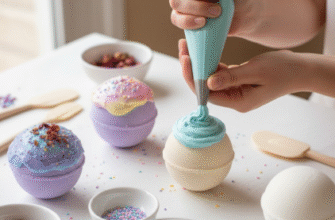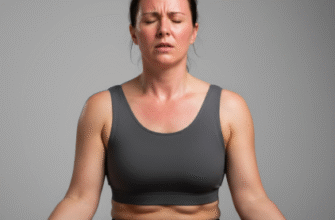Feeling tight, sore, or just generally wound up after a long day or a tough workout? You’re not alone. Many people turn to massage for relief, but regular professional massages can get expensive and time-consuming. Enter the humble foam roller – a simple cylinder that’s become a go-to tool for self-massage, or more technically, self-myofascial release. It might look basic, but this tool can be surprisingly effective when you know how to use it.
Think of your muscles and the connective tissue surrounding them (fascia) like a complex network. Sometimes, knots or tight spots, often called trigger points, can form within this network due to exercise, repetitive movements, poor posture, or even stress. Foam rolling applies pressure to these areas, aiming to release tension, improve blood flow, and potentially enhance flexibility and reduce muscle soreness. It puts the power of massage right into your own hands, letting you target specific areas whenever you need it.
So, What Exactly is a Foam Roller?
At its core, a foam roller is typically a cylindrical piece of compressed foam. They come in various lengths, diameters, densities (hardness), and even surface textures. You’ll find smooth rollers, rollers with ridges or knobs, short rollers for travel or specific areas, and longer ones for broader strokes across larger muscle groups like your back or legs.
Density is key: Softer rollers are generally better for beginners as they provide less intense pressure. As you get accustomed to rolling, or if you have denser muscle tissue, you might progress to a firmer roller for deeper work. Textured rollers with knobs or grids are designed to mimic a massage therapist’s thumbs or fingers, offering a more targeted and intense sensation. Choosing the right one often comes down to personal preference and tolerance.
Why Bother Rolling Around on a Piece of Foam?
It might look a bit strange, but the potential perks make it worthwhile for many. Foam rolling is primarily used to:
- Ease Muscle Tightness: This is the big one. By applying pressure, you can encourage tight muscles and fascia to relax and release. Think of it like kneading out knots in dough.
- Reduce Post-Exercise Soreness: Many athletes and fitness enthusiasts use foam rollers after workouts to potentially lessen delayed onset muscle soreness (DOMS). While not a magic cure, it can help improve circulation to tired muscles.
- Improve Flexibility and Range of Motion: Regularly releasing tension in muscles and fascia might contribute to better flexibility and allow your joints to move more freely over time. This can be beneficial both for athletic performance and everyday movement.
- Warm-up Preparation: Some people incorporate light foam rolling into their warm-up routine to increase blood flow to the muscles they’re about to work.
- Promote Relaxation: The slow, rhythmic nature of foam rolling can actually be quite relaxing for some, helping to calm the nervous system.
It’s an accessible way to give your muscles some attention without needing a C-suite budget or an appointment book.
Getting Started: Your First Rolling Session
Ready to give it a try? It’s pretty straightforward. Here’s what you need to know:
Choose Your Weapon (Wisely): If you’re brand new, start with a medium-density, smooth roller. You can always upgrade later if you feel you need more intensity. A standard length (around 36 inches) is versatile for most exercises.
Find Your Space: You’ll need enough clear floor space to lie down and move around comfortably with the roller. A yoga mat can add a bit of cushioning but isn’t strictly necessary.
Dress the Part: Wear comfortable clothing that allows you to move freely, like workout gear. Avoid overly baggy clothes that could get caught under the roller.
The Basic Technique: Roll With It
The fundamental principle of foam rolling is using your own body weight to control the pressure applied to the muscle by the roller. Here are the golden rules:
Go Slow: This isn’t a race. Move slowly and deliberately across the muscle – aim for about one inch per second. This gives your muscles time to adapt and relax under the pressure.
Breathe: Don’t hold your breath! Deep, steady breathing helps your muscles relax and makes the process more effective (and less uncomfortable).
Pause on Tender Spots: When you find a particularly tight or tender spot (a trigger point), pause there for 20-30 seconds. Don’t push into sharp pain, just maintain steady pressure while breathing deeply. You should feel the tension gradually ease.
Control the Pressure: You are in control. If an area feels too intense, shift your body weight slightly to reduce the pressure. You can support yourself more with your hands or feet.
Target Muscle Bellies: Focus on rolling the fleshy part of your muscles. Avoid rolling directly over bones or joints (like your kneecap, hip bone, or spine).
Key Muscle Groups to Roll (And How to Do It)
Here are some common areas people target with a foam roller:
Calves (Gastrocnemius & Soleus)
Sit on the floor with your legs straight out in front of you. Place the foam roller under your calves. Put your hands on the floor behind you for support and lift your hips off the ground. Slowly roll back and forth from just below your knees to just above your ankles. To increase pressure, you can cross one leg over the other. Rotate your leg slightly inwards and outwards to hit different angles of the calf muscle.
Hamstrings
Maintain a similar starting position as the calves, but place the roller higher up, under your hamstrings (the back of your thighs). Support yourself with your hands and lift your hips. Roll slowly from the base of your glutes down towards the back of your knees (but not directly behind them). Again, crossing one leg over the other adds intensity.
Glutes (Gluteus Maximus & Medius)
Sit directly on top of the foam roller, positioning it under your glutes. Support yourself with your hands behind you. Bend your knees and place your feet flat on the floor. To target one side more specifically, cross one ankle over the opposite knee (like a figure-four stretch position) and lean slightly towards the side of the crossed leg. Roll gently back and forth and side to side over the glute muscle.
Quads (Quadriceps)
Lie face down on the floor. Place the foam roller under the front of your thighs. Support your upper body on your forearms (like a plank position). Use your arms to pull and push your body, rolling the foam roller from the top of your knees up towards your hip flexors. Keep your core engaged to avoid arching your lower back. You can slightly rotate your body inwards or outwards to target different parts of the quad.
IT Band (Iliotibial Band)
This one can be intense, so proceed with caution. Lie on your side with the foam roller positioned under your outer thigh, just below your hip bone. Support your upper body with your forearm on the floor. Your top leg can be bent with the foot placed on the floor in front of or behind your bottom leg for support and pressure control. Roll slowly along the outer thigh, from just below the hip to just above the knee. Avoid rolling directly onto the bony part of your hip or knee. If it’s too intense, put more weight onto your supporting arm and leg.
Upper Back (Thoracic Spine)
Lie on your back with the foam roller positioned horizontally under your upper back (around your shoulder blades). Bend your knees and place your feet flat on the floor, hip-width apart. Lift your hips slightly off the floor, supporting your weight with your feet and the roller. You can cradle your head gently in your hands to support your neck. Use your feet to slowly roll back and forth, covering the area from the top of your shoulders down to the bottom of your rib cage. Crucially, do not roll onto your lower back (lumbar spine) with this technique, as it lacks the support of the rib cage and shoulder blades.
Important Safety Note: Never roll directly over joints like your knees, ankles, or elbows. Avoid rolling the lower back (lumbar spine) directly, especially with significant pressure, as this can cause discomfort or injury. If you have any existing injuries, medical conditions, or are pregnant, consult with a healthcare professional before starting foam rolling. Always listen to your body; discomfort is expected in tight areas, but sharp, shooting, or persistent pain is a signal to stop.
How Often and How Long?
Consistency tends to yield the best results. Rolling for 10-20 minutes a few times per week is often a good starting point. When targeting a specific muscle group, aim for about 30-60 seconds of slow rolling, perhaps pausing on tender spots for an additional 20-30 seconds.
You can roll before workouts as part of a dynamic warm-up (focusing on the muscles you’ll be using), after workouts to aid recovery, or on rest days to work on general tightness and mobility. There’s no single perfect time – find what works best for your schedule and how your body responds.
Final Thoughts on Foam Rolling
The foam roller is a versatile, affordable, and effective tool for self-care. It empowers you to address muscle tightness and soreness on your own terms. While it might feel uncomfortable initially (often described as a “good hurt”), regular use can lead to improved movement quality and general muscle relief. Remember to start slow, listen to your body’s feedback, stay consistent, and focus on proper technique. It might just become an indispensable part of your wellness routine.








